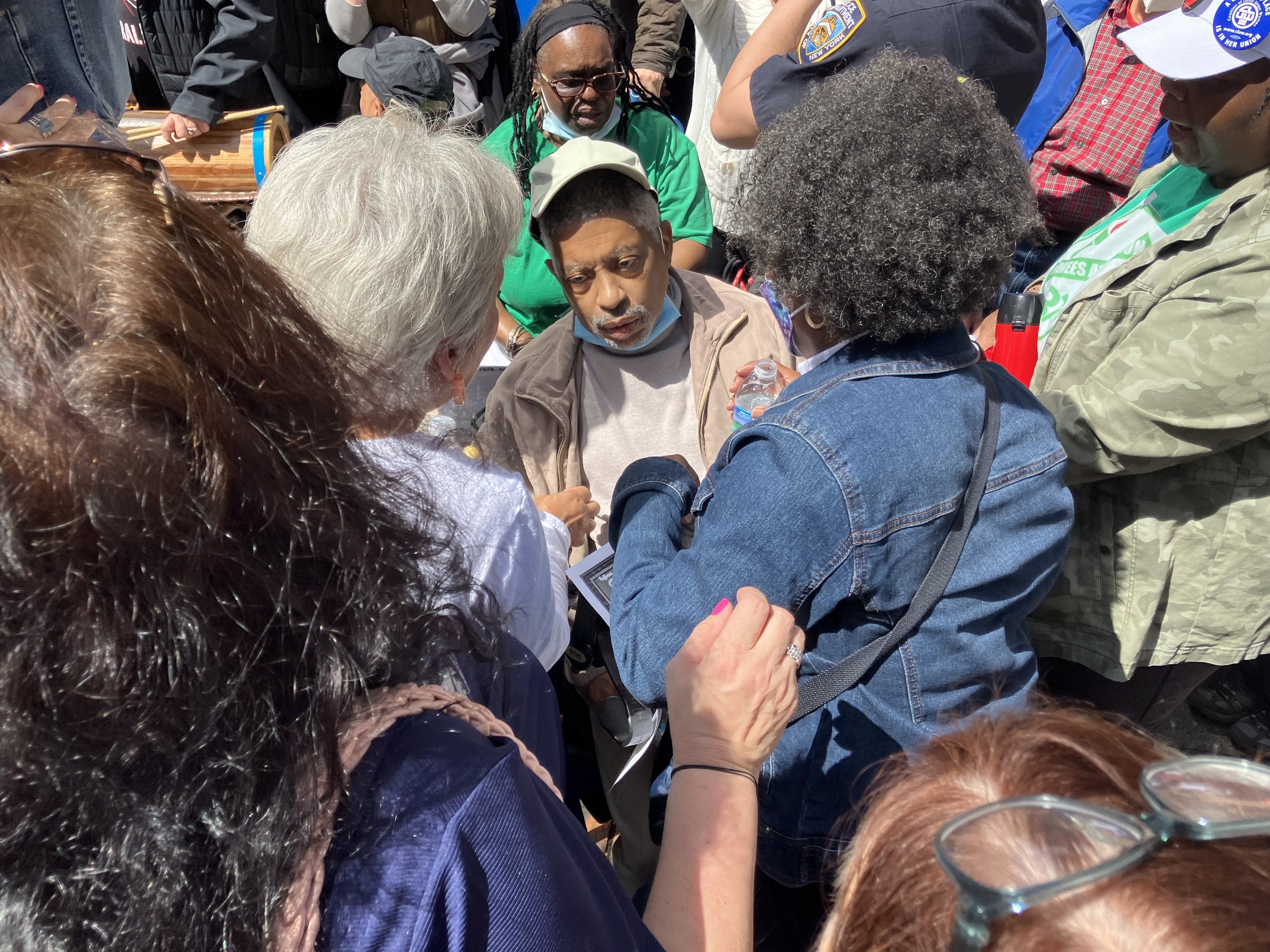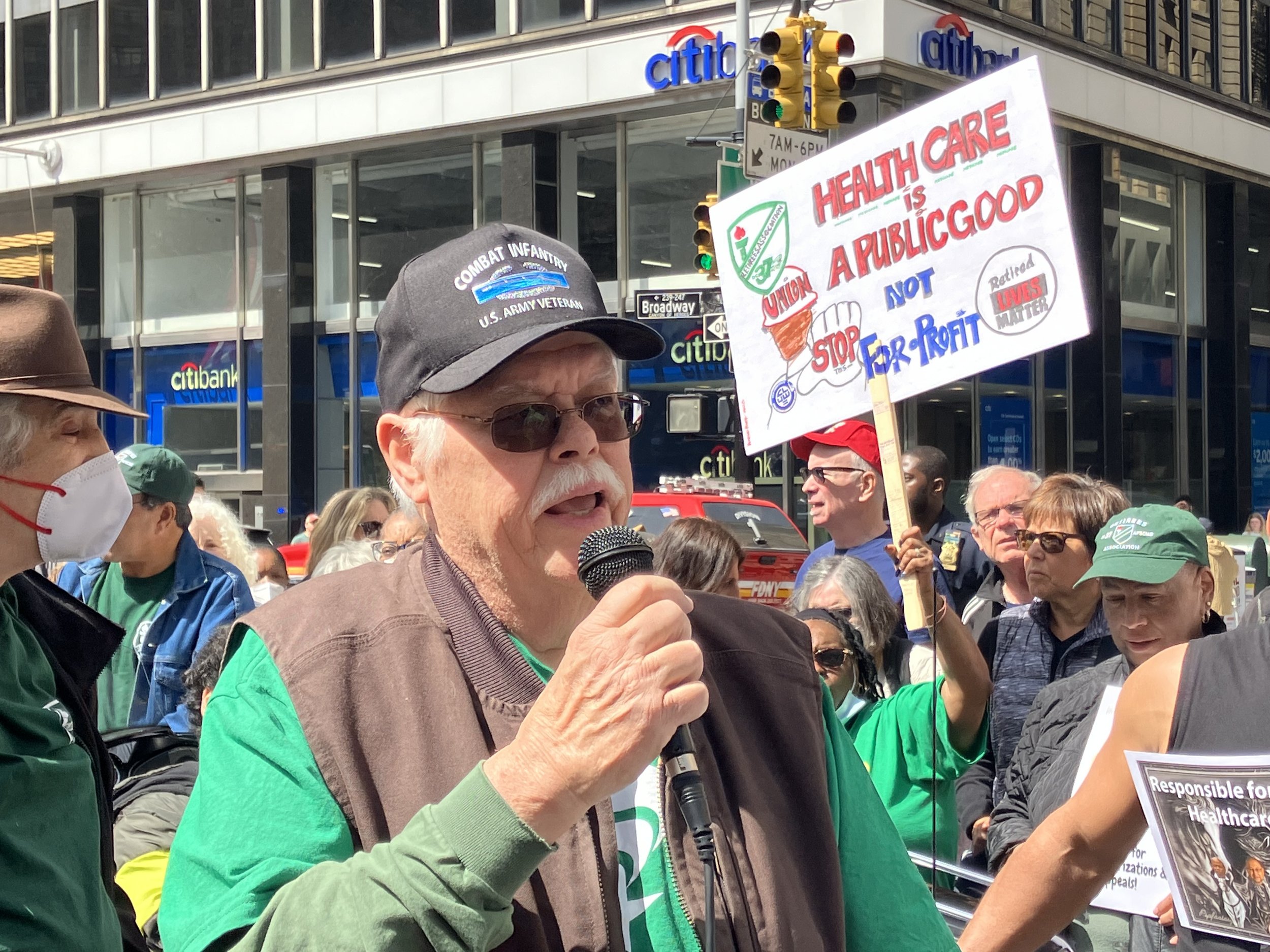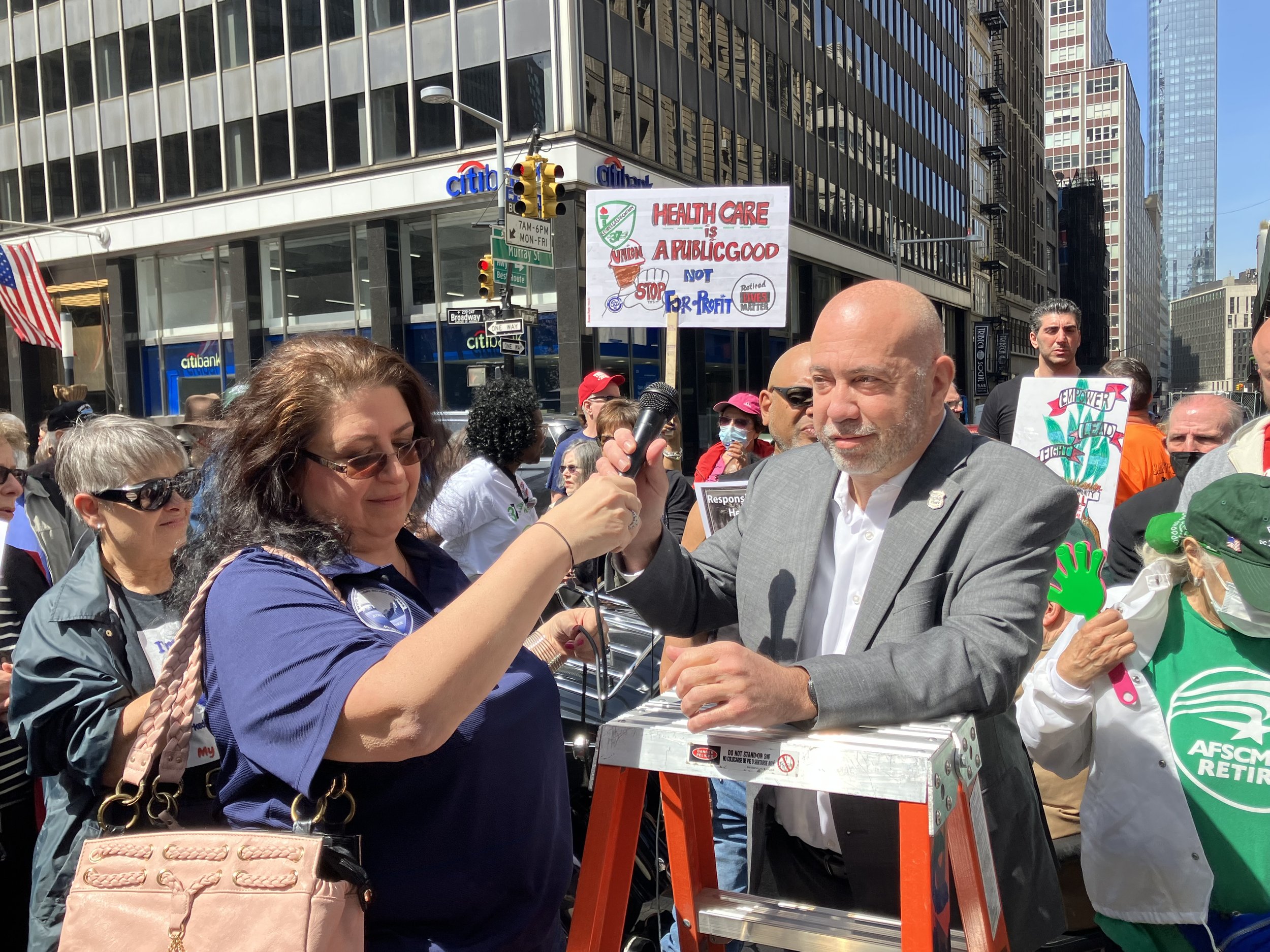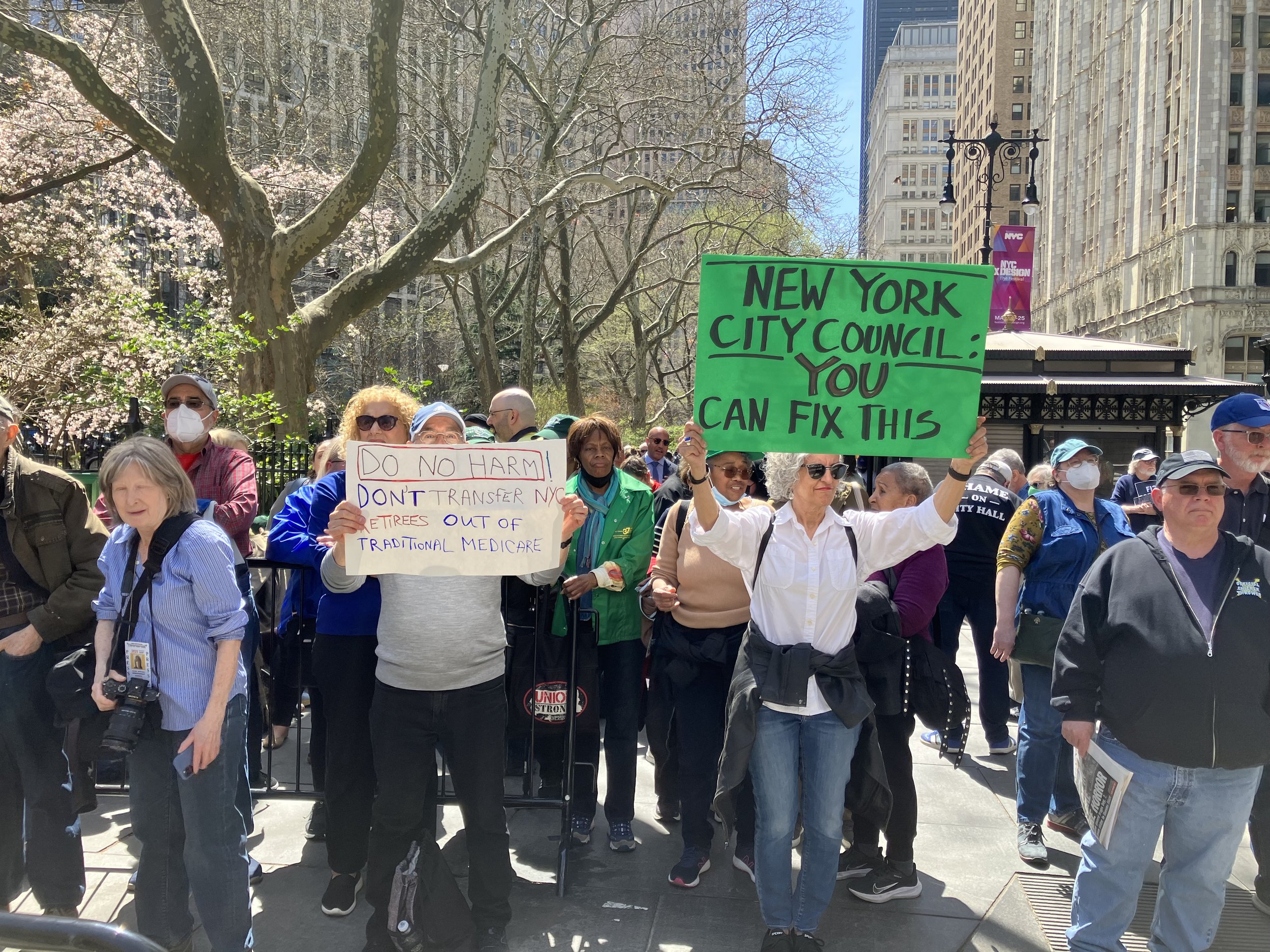And are rightwing billionaires who want more, more, more money willing to make common cause with bigots, fascists, and wannabee killers to get it?
https://open.substack.com/pub/thomhartmann/p/whats-behind-the-gops-war-against?r=3qu3t&utm_campaign=post&utm_medium=email
Louise and I just finished watching the Netflix short series Transatlantic, and it prompted us to consider what happens when a rightwing social movement takes over a country, as we’re currently experiencing in the US with more than a third of our states openly embracing fascism.
Transatlantic is a gripping drama about a group of Jewish refugees — including Hannah Arendt and Marc Chagall — who are trapped in Marseilles trying to flee the Nazis as they sweep across France in late 1940. Complicating their flight, the American envoy and the head of the local French police are both in agreement with the Nazis that the Jewish refugees are “degenerates” and “animals” who should appropriately end up in the Nazi camps.
The parallels to today’s America are startling. The Republican rhetoric about the queer and Black communities — and, often, about Jews (usually coded as “George Soros”) — is startlingly similar to that of the Nazis and the Vichy French about Jews. Donald Trump, for example, is openly calling Alvin Bragg an “animal.”
But how do things get this far? How and why did it happen in Germany, and how and why is it happening here today?
After Hitler’s failed beer hall putsch, he was legally banned from public speaking and mass rallies. In 1930, however, German media mogul Alfred Hugenberg — a rightwinger who owned two of the largest national newspapers and had considerable influence over radio — joined forces with Hitler and relentlessly promoted him, much like the Murdoch media empire and billionaire-owned rightwing radio helped bring Trump to power in 2016.
While politically independent, German President Paul von Hindenburg’s sympathies lay with the conservatives and monarchists. Like Reagan’s GOP, Hindenburg’s coalition favored Germany’s morbidly rich (Hindenburg’s father was an aristocrat) and industry, but was always just short of achieving total power over the German state.
Hitler, on the other hand, didn’t seem to care much at first about Germany’s aristocrats; he led a populist evangelical movement dedicated to “purifying” Germany of the “filth” of Jews, homosexuals, Gypsies, and socialists. While Hindenburg and the German conservative movement looked down on Hitler and his followers as ignoble rabble rousers, they were more than enthusiastic about getting their votes.
As German industrialist Fritz Thyssen writes in his apologetic book I Paid Hitler, he pressured German President von Hindenburg to appoint Hitler as chancellor, and then lobbied the Association of German Industrialists, that country’s and era’s version of the US Chamber of Commerce, to donate 3 million Reichsmarks to the Nazi Party for the 1932 election.
While Thyssen did it primarily because he wanted tax cuts for morbidly rich people like himself and government contracts for his company, his efforts combined with Hugenberg’s media empire brought Hitler and his bigots to power.
Hitler’s sales pitch to the German people was grounded in the idea that average German working people were victims and Hitler was their champion.
He claimed Jews, homosexuals, and socialists had “stabbed Germany in the back” by participating in negotiations for the Treaty of Versailles that imposed punitive conditions on the country, producing widespread poverty and an economic crisis.
If the German people were victims, Hitler told them, the villains were German minorities, promoting degeneracy like jazz and swing music, tolerance of homosexuality and transgender people, and the “international Jewish conspiracy.”
Once the Nazis took power they banned books, outlawed drag shows and homosexuality, changed school curricula to remove mention of their atrocities in WWI, and rewrote election laws so they’d never again lose an election.
The transformation of Germany was swift. Former German Nazis I knew well in the 1980s when I lived in that country often commented to me on how “a party of bullies” threatened violence and intimidated people to the point that the average person gave up resisting or even joined along for fear of ending up a victim themselves.
Thus, a minority party that never took more than a third of the national vote before seizing power began a process that inevitably led to the death of 73 million human beings.
Once you build your party’s political base on hate and fear it’s pretty much impossible to one day say, “You know, those Jews and Blacks and queer people we were vilifying aren’t really such bad people after all.”
This is all echoed in the crisis today facing both the GOP and the Democratic Party’s opposition to it.
As former Labor Secretary Robert Reich recently wrote:
“My friends, the Republican Party is no longer committed to democracy. It is rapidly becoming the American fascist party.”
Rightwing American billionaires, parroting Fritz Thyssen, have spent the past decade pouring money into Republican-aligned groups working to change school textbooks, ban library books, outlaw healthcare for queer people, criminalize trans participation in civil society, and make it harder for college students and Black people to vote.
Like Thyssen, most probably aren’t all that bigoted themselves: their primary motivation is lowering their own taxes and increasing their companies’ government purchases and subsidies.
But to get there they must have Republicans in power, and the GOP’s base — while they don’t much care about billionaire’s taxes or corporate deregulation — are fervent bigots.
Democrats, meanwhile, face the same crisis the Social Democrats did in Germany in the 1930s.
They believe in the free speech and free flow of political ideas associated with democracy, so are wary of using government power to squelch the rise of the current fascist movement within the GOP. Yet they see the direction things are moving and are frequently — but impotently — calling it out.
Holding bullies to account for their crimes and their intimidation tactics is really and truly difficult, as the German Social Democrats discovered in 1933 and Manhattan DA Alvin Bragg is realizing today. Typically the only thing that stops bullies is to punch them in the face, which can reduce one to their level.
There are signs that a few of the billionaires funding the modern neofascist wing of the GOP’s rise to power are having second thoughts, much as Fritz Thyssen ultimately did in Germany.
Billionaire DeSantis backer Thomas Peterffy (the second richest man in Florida at $26 billion) told The Financial Times last week:
“I have put myself on hold. Because of (DeSantis’) stance on abortion and book banning ... myself, and a bunch of friends, are holding our powder dry.”
So far, Peterffy is the outlier. The billionaire-funded movement to pass anti-voting, anti-trans, anti-Black history, anti-gay marriage, anti-abortion, and anti-public school legislation and policy is roaring down the track, as is the billionaire-owned media campaign to promote fascism.
And since five corrupt Republicans on the Supreme Court legalized political bribery with Citizens United, the deck remains stacked in their favor.
There is no Democratic equivalent to Fox “News,” 1500 rightwing radio stations, hundreds of subsidized rightwing podcasts and media sites, The Wall Street Journal, ALEC, Heritage Foundation, Musk’s rightwing reinvention of Twitter, Facebook’s GOP-leaning algorithms, or the hundreds of other state and national policy operations and think tanks.
The American people, however, seem to be waking up even in the face of this onslaught of billionaire-owned and -funded media and political infrastructure.
The velocity with which Republican governors are leaving ERIC so they can quietly purge people from their voting rolls (now that five corrupt Republicans on the Supreme Court legalized that in 2018) and passing over 400 new make-it-harder-to-vote laws shows how concerned they are about this trend.
So, to the question about what’s really behind the war Republicans are waging against American democracy, the answer is simple: rightwing billionaires who want more, more, more money and are willing to make common cause with bigots, fascists, and wannabee killers to get it.
Given how far we are down this road to fascism — and how the GOP’s fascist faction is being supported by both American billionaires and outsiders like Orbán, Putin, and Xi — the 2024 election may well be the equivalent of the November, 1932 German elections: a make-or-break moment for American democracy.






